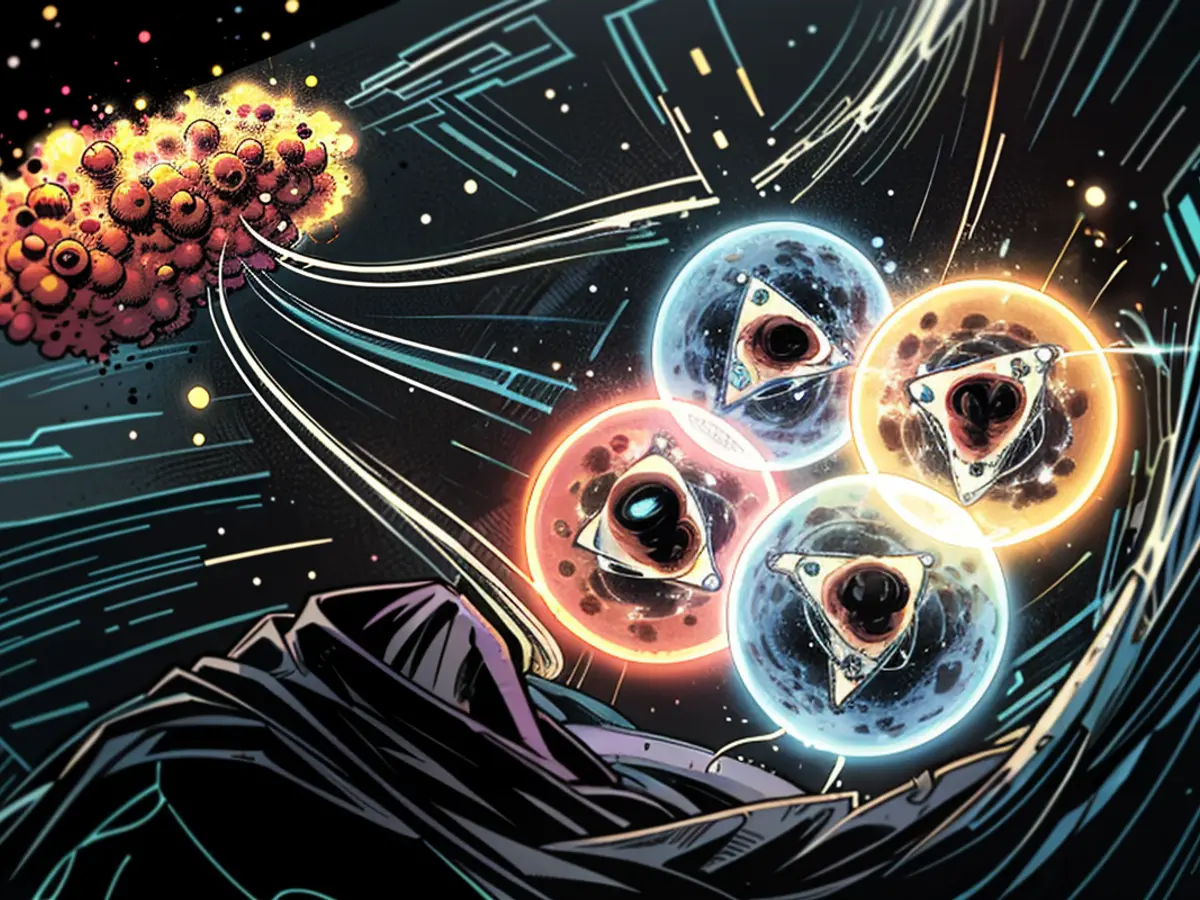Ground-breaking antimatter core aids in investigating elusive dark matter
An international research group has uncovered the heaviest antimatter atomic nucleus ever recorded in an experiment. This finding could potentially shed light on the elusive quest for dark matter, whose existence is predicted but remains unproven.
Antimatter has long baffled scientists. It's theorized that equal amounts of antimatter and "regular" matter were created during the Big Bang. Yet, antimatter hardly exists in today's universe. A team from the STAR collaboration is trying to unravel this mystery by conducting experiments using the Brookhaven National Laboratory's particle accelerator in the United States. In these experiments, they've now discovered the heaviest antimatter atomic nucleus yet, as they detail in a study published in "Nature". Lead authors of the study hail from the Institute for Modern Physics (IMP) of the Chinese Academy of Sciences.
Creating Big Bang-like conditions
When gold atomic nuclei collide nearly at the speed of light within a particle accelerator, the same extreme temperatures and pressures present in the universe moments after the Big Bang are recreated. Thousands of new matter and antimatter particles are produced during each collision.
Although matter and antimatter share the same fundamental components, the particles possess opposite electrical charges. For example, electrons are negatively charged, while their antiparticles, positrons, are positively charged.
Billions of collisions, hundreds of discoveries
The STAR collaboration team explained that they fired around six billion gold atomic nuclei for their experiment, according to "World of Physics." As particles traversed a gas in a magnetic field, detectable traces of varying thicknesses were left behind, as explained in "The Conversation." These traces curved in the magnetic field, with matter and antimatter reacting differently: antimatter moving in one direction, while matter moved in the opposite.
The newly discovered nucleus was named antihypertritium-4. It consists of an antiproton, two antineutrons, and an antihyperon, similar to a typical atomic nucleus with three neutrons, but with one replaced by a hyperon, making it heavier. The same applies to antimatter, resulting in the heaviest and most unusual nucleus discovered to date.
Considering the rare conditions needed for the antiparticles to merge into antihypertritium-4, the researchers found only 16 of these atomic nuclei.
The researchers also studied the lifetime of antihypertritium-4 compared to hypertritium-4, its "normal" matter counterpart. They found no difference.
This result supports established physical models, which stipulate that matter and antimatter particles annihilate each other, leaving behind radiation, when they collide. However, this finding does not explain the origin of the "asymmetry." According to these models, matter and antimatter should have annihilated completely after the Big Bang.
Data for dark matter research
However, the STAR collaboration's discovery may aid in solving an even greater enigma: the mystery of dark matter. Its existence is only inferred from its impact on the movements of stars and galaxies. For instance, the density of mass in the center of spiral galaxies is higher than near the edges. Given this density, orbital velocities of the stars should decrease towards the edges, but they do not. This suggests an invisible matter responsible for these discrepancies.
Scientists estimate that over 80% of the universe's total mass is made up of dark matter. Despite its significant role in shaping our universe, its composition remains unknown.
Experiments onboard the International Space Station (ISS), such as the Alpha Magnetic Spectrometer (AMS), aim to shed light on dark matter. AMS seeks high-energy particles from outer space using a strong magnet to bend their trajectories. Just like in a particle accelerator, matter and antimatter particles move in opposite directions.
AMS is particularly interested in antihelium, which some theories propose is produced when dark matter particles collide. The same reaction can occur when high-energy cosmic radiation interacts with matter.
To differentiate between the cosmic and terrestrial sources of antihelium, an experiment at the CERN research center using the particle accelerator has already provided valuable data. By colliding protons (major cosmic radiation components) and lead atoms with high speeds, they determined the likelihood of creating antihelium-3 nuclei, enabling them to distinguish between these possible antihelium sources and trace them back to their potential regions of origin.
The STAR collaboration, using the Brookhaven National Laboratory's particle accelerator, have conducted experiments involving gold atomic nuclei collisions. These experiments involve particle accelerators and other apparatus, recreating Big Bang-like conditions and producing a large number of matter and antimatter particles.
The heaviest antimatter atomic nucleus discovered in the study, antihypertritium-4, was created from these collisions. The particle accelerator and associated apparatus played a crucial role in creating the extreme temperatures and pressures necessary for the formation of this rare nucleus.







